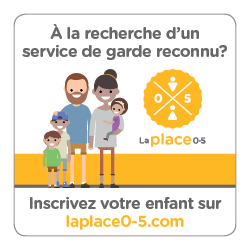Young children live in the moment. They lack the ability to consider the consequences of their actions or recall set limits in time to stop themselves. Plus they do not yet understand the difference between good and bad behavior. Patience is also challenging for young children because they want things “Now!” and do not have the language or experience to understand why or when things they want will become available.
That being said, it has been found that a child’s ability to control their impulses and delay gratification is highly predictive of future academic success because without these skills children are unable to listen, attend to instructions, and learn.
Patience and self-control will naturally improve with typical development because as children learn language, it provides them with an internal dialogue to regulate their behavior. Plus, with age, long-term memory increases which helps children remember rules and limits set previously.
There are also a variety of methods you can use to aid your child in developing these important skills.
Play Games that Teach Self-Control: Children learn self-control by learning how to stop and control their bodies. There are many games that you can play that can help children learn to control their bodies, listen and follow directions. Play games using the words “stop and go,” “fast and slow,” “loud and soft” or “whisper and shout.” Familiar games include “Duck, Duck, Goose”, “Red Light, Green Light”, “Hot Potato” and “Simon Says”. You can use these examples to create your own simpler versions for younger children. For example, you can make a game out of walking in the street where you say “go, go, go” on the sidewalk and then “stop” on every corner.
Music and Movement: There are many children’s songs that require children to pair words with actions which provide opportunities for children to practice self-control and good listening skills. For example, '' head and shoulders, knees and toes''
Teach Waiting: Increase your child’s ability to wait by slowly increasing the time between the request and the delivery of the desired item. You can use the word “wait” consistently to help your child begin to understand that this word means that the item or action is coming. For instance, if your child is requesting an item, you can say, “Sure, I’ll get it for you. Wait a minute mommy is coming.” Then slowly add wait time by making comments about preparing the food item or trying to find the item, while reassuring your child that the item is on its way. Also you can use other natural opportunities to teach the word “waiting” while waiting for the elevator to open, waiting in line, or waiting for a turn on the swing or slide.
Make Waiting Concrete: Use visual timers or kitchen timers to help your child begin to understand the concept of time and to teach them to wait for certain things that are not yet available (e.g., to show and explain that dinner will not be ready for 10 minutes). Timers are also helpful to teach siblings to take turns with things that cannot be shared such as the computer or television. Explain that when they hear or see the timer go off, they will get the activity or item they want.
Give Choices that Encourage Delayed Gratification: Try to bargain with your child by making comments like, “you can have one cookie now, or you can have two cookies if you wait until after dinner.” These types of choices will encourage your child to control their impulses and desire for instant gratification and instead wait to get a bigger reward at a later time – a very important lesson they will benefit from later in life.
Be a Role Model for Self-Control: Model for your child how to stay calm in frustrating situations. Verbalize your feelings and how you are coping with them in front of your child. Do not overreact to situations by yelling or losing control when you are angry because then your child will learn that this is an acceptable way to express their feelings. Instead, if something is upsetting you or you feel angry, make comments like, “I’m very mad right now. I’m going to take a deep breath and calm down. It’s okay. I can handle this.” This type of language will help your child learn that it is okay to have strong feelings but that there are appropriate ways of coping with them.
Finally, the best approach to helping children develop patience and self-control is providing them with a predictable environment where they know what to expect and what is expected of them. Providing children with a consistent routine, continuously teaching and reviewing rules and expectations, using consistent language to teach new skills, setting consistent limits and praising good behavior will improve your child’s capacity to develop a degree of self-control and patience that will enable them to manage their own behavior in the future.”
Recommandée par Nancy
Source: Dr. B Teaches Toddlers Patience on MommyShorts.com











